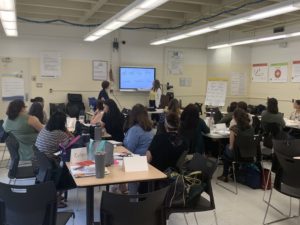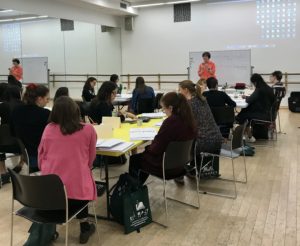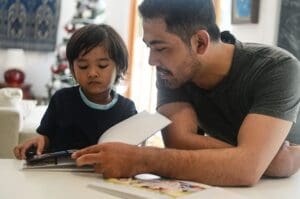You may not associate reading with science, but science just might be the key to successful reading instruction.
If learning to read is a scientific process, then why are most general reading programs and reading instruction in most educational centers not based on science? Until recently, many believed that reading was something that just occurred naturally, a skill that all children would develop. But it seems like many children aren’t developing this essential skill. In fact, 25 million kids in the U.S. alone can’t read proficiently.
According to an article by the New York Times, science has shown that learning to read isn’t a natural process. “Learning to talk is a natural process that occurs when children are surrounded by spoken language, learning to read is not. To become readers, kids need to learn how the words they know how to say connect to print on the page. They need explicit, systematic phonics instruction. It’s not enough to just have books around. Science shows clearly that to become a good reader, you must learn to decode words,” explained the author Emily Hanford.
The good news: you can find science-based reading instruction through Orton-Gillingham. This reading approach is scientifically proven to work, using scientifically backed research.
In fact, this is what differentiates Orton-Gillingham from reading programs. It’s not a reading program, it’s an approach backed by science. Read on to find out why using science to teach students to read is the way to go.
How does Orton-Gillingham use science to teach students to read?
Scientists are now able to predict and measure brain activation reactions to people’s speech and print. Using new investigative techniques, researchers are able to understand individual responses in the brain to different types of instruction. Clinical MRIs can see the changes in brain activity before and after a student has received structured multi-sensory reading instruction.
Many of these findings show that the science of reading must be systematic, including things like decoding skills, word recognition, language comprehension, and phonological awareness.
The Orton-Gillingham model is a systematic, multisensory way of educating students with a major focus on phonological awareness, as well as other scientifically based language structures.
The OG approach falls under the Structured Literacy™ umbrella (more on this below), which means it uses structures such as phoneme awareness, morphology, orthography, semantics, syntax, and text structure to improve reading skills. By using the visual, auditory, and kinesthetic centers of the brain, Orton-Gillingham aims to ‘rewire’ the neurological connections in the language centers of the dyslexic brain.
The approach also focuses on a prescriptive-diagnostic way of teaching, meaning that all errors will be noted and corrected with feedback. Future lessons will ensure that these errors are fixed — no moving on until the student feels confident that they understand the material.
What about other reading programs?
Most general reading programs may work just fine for the average reader. However, the problem is that about 25% of students in the U.S. struggle with reading. While the other 75% of learners may be able to read without scientifically researched methods of teaching, the other 25% (which includes readers with language-based learning difficulties or disabilities such as dyslexia) really need a more systematic-based format of instruction or they won’t learn.
While some reading programs do include a systematic, tiered method of instruction, most are not scientifically backed and instead focus on Balanced Literacy or Whole Language. According to the aforementioned New York Times article, when The National Council on Teacher Quality reviewed the syllabuses of teacher preparation programs nationwide, it seemed that less than four out of 10 taught the components of effective reading instruction identified by scientific research.
Balanced Literacy vs. Structured Literacy™
Many teaching programs focus on ‘Balanced Literacy (also known as ‘Whole Language,’) a theory that states that students can learn to read from reading books and texts that appeal to them, without an advanced focus on phonics or learning to decode.
Typically, this method banks on students’ recognizing words by sight or learning via context. This is the opposite of Structured Literacy™, which is what Orton-Gillingham uses to teach reading. While 75% percent of students may be able to learn to get by using a Balanced Literacy method, the other 25 % that make up that struggling reader group, won’t.
Structured Literacy™, on the other hand, is all about teaching words systematically, with more specific and explained instruction. Structured Literacy™ is a term used to encompass both the structure of language itself as well as the structure of the instructional approaches to facilitate the literacy learning process. It refers to both the content as well as the principles of the instruction. This type of instruction is not only apt for general learners but can be especially efficient for those struggling with language-based learning difficulties like dyslexia or learning English as a second language.
Sight words and high-frequency words shouldn’t just be ‘recognized.’ Instead, those with literacy difficulties will be able to recognize and understand them when explained and decoded through their morphological structure, orthographic patterns, spelling, and word origin/meaning using Structured Literacy™.
If science-based reading instruction like OG is more effective, why don’t more reading programs use it?
For starters, the use of science to teach reading can be off-putting for some. Science wasn’t historically a way to teach reading until the founders of the Orton-Gillingham Approach used it, and even then, much of the research was noted in scientific and psychology journals, versus sent to curriculum creators or published in teaching magazines or educational resources. Plus, concepts like Structured Literacy™ take more time and effort to teach, this means additional training for teachers. Many school districts simply don’t have the resources for additional training.
Because of this, scientifically backed reading instruction or Structured Literacy™ methods like Orton-Gillingham didn’t always find their way into reading curriculums. Although things are slowly changing, many reading programs still lack this style of instruction. Hopefully, as time goes on, scientific research and facts will carry more weight in reading curriculums, essentially helping more students learn to read, especially those with language-based learning difficulties. Programs come and go every year, but the structure of the language remains the same. When students and teachers understand the structure of the language, students read!
If you’d like to begin incorporating scientifically backed reading instructional approaches into your reading curriculum, consider taking a course with Orton-Gillingham and begin helping 100% of your students learn to read — not just 75%. For more information or to sign up for an Edwards Orton-Gillingham training course, click here.







One reply on “What is the difference between The Orton-Gillingham Approach and reading programs?”
j